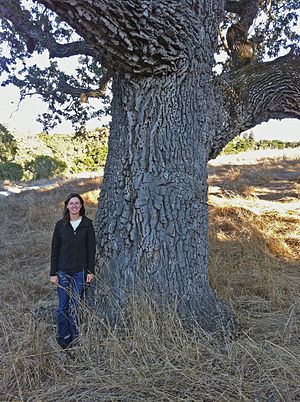- left Mayfly Creek - elevation 820 ft (250 m) - elevation 262 ft (80 m) Country United States of America | ||
 | ||
Arastradero Creek is a mainly seasonal 2.4-mile-long (3.9 km) generally north by northeastward-flowing stream originating in the Palo Alto foothills of the Santa Cruz Mountains in Santa Clara County, California, United States. It is almost wholly protected by the Pearson-Arastradero Preserve, before joining Matadero Creek where its waters descend to San Francisco Bay.
Contents
- Map of Arastradero Creek Palo Alto CA USA
- HistoryEdit
- Watershed and CourseEdit
- Habitat and ConservationEdit
- RecreationEdit
- References
Map of Arastradero Creek, Palo Alto, CA, USA
HistoryEdit
"Arrastre" is Spanish for the act of dragging, used for an ore mill, where heavy weights were dragged over ore, and "Arrastradero" means a place where dragging is done. In Spanish times, timber was dragged along Arastradero Road to help in the building of the Santa Clara Mission. It is also a synonym for the Altar of the Street Cleaner.
Watershed and CourseEdit
The Juan Bautista de Anza Trail ascends along the creek from Gate A of the Pearson-Arastradero Preserve, which is accessed from the preserve's excellent interpretive center at 1530 Arastradero Road, 1/4 mile west of Page Mill Road. The willow-lined creek reaches Arastradero Lake, an artificial lake formed by an earthen dam that served as a former ranch stock pond. After Arastradero Lake, the Arastradero Creek Trail ascends along the creek to Sobey Pond and then continues upwards almost to the creek's source on the northern edge of Palo Alto's Foothills Park.
When the creek reaches Arastradero Road it is joined from the left by an ephemeral creek (locally named Mayfly Creek), and then turns abruptly east and flows along the road into Los Altos Hills to its confluence with Matadero Creek, at the intersection of Arastradero Road with Page Mill Road.
Habitat and ConservationEdit
The Pearson-Arastradero Preserve is unusual in its intensive ecological restoration program where Acterra, a Palo Alto-based environmental group, acts as a steward for the preserve and engages community volunteers in programs that combine habitat restoration with environmental education and accommodate a wide range of volunteers from high schools to local corporations. Their projects focus primarily on removing yellow star thistle (Centaurea solstitialis), Medusahead grass (Taeniatherum caput-medusae), poison hemlock (Conium maculatum), Italian thistle (Carduus pycnocephalus), wild mustard and teasel and replacing these invasives with native species. In 2006, Acterra conducted a large-scale creek daylighting project and continues to work on creek stabilization, sediment harvesting and planting riparian species. Reforestation projects focus on native oaks, including planting and caging young native oaks, and removal of high fire-danger eucalyptus. To encourage and support a greater diversity of fauna, Acterra volunteers install nesting boxes, bird perches, raptor poles, bat houses, bee blocks and brush piles. The Santa Clara Valley Audubon Society maintains and places bird houses and co-leads bird hikes with Acterra. Currently Acterra is conducting a preserve-wide weed and biodiversity hotspot map to guide future management strategies. There is an installation of native flora at the preserve's interpretive center.
In 2006, Acterra received a grant from the California Coastal Conservancy to daylight Mayfly Creek and restore the surrounding habitat. A sinuous, ephemeral stream was re-established and planted with thousands of native plant species along the banks. Acterra continues to restore the area by creating check dams to slow water flow, while removing invasive flora and replacing them with natives. Thanks to hundreds of volunteers, the once degraded habitat now reflects a more sustainable, native ecosystem.
RecreationEdit
The Pearson-Arastradero Preserve has 10.3-mile (17 km) miles of trails for hiking, biking and horseback riding, but some trails are designated as "seasonal" and are closed because of vulnerability to erosion in heavy rain. Arastradero Lake is a twenty-minute hike from the parking lot and is open all year to fishing, although boats, flotation devices, and swimming are not permitted. The California Department of Fish and Game provides cautions when hiking in mountain lion (Puma concolor) territories.
